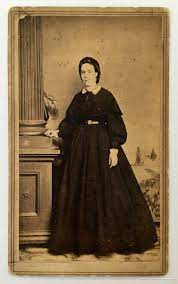In every age and every society, there are always people who strive to make the world better. Henriette Díaz DeLille was such a person.
Henriette was born in New Orleans, Louisiana sometime in 1812 or 1813. Her mother was a free woman of color, and her father was a Frenchman. In those days, a system of “plaçage” was in effect, in which women of color would enter into a common-law type of marriage with a white European or American but not get officially married. Later, the man might opt to leave the plaçage relationship to marry a white woman.
Although Henriette and her siblings were octoroons, people seven-eighths white and one-eighth black, in those days, any “black heritage” was enough to label a person “colored” and be treated as such by racist laws called Jim Crow laws.
Henriette’s mother did what she could to prepare Henriette to be ready to enter a plaçage relationship. Henriette’s mother taught her basic nursing skills, how to prepare medicines from herbs, and she taught her daughter French literature, music, and dancing. The mother hoped that in time, Henriette would be successful when attending quadroon balls and find a suitable partner.
Henriette learned what she could from her mother, but she firmly rejected the whole plaçage system, for she believed it was contrary to her Catholic faith and sanctity of the sacrament of marriage.
In 1827, when she was only 14-years-old, Henriette began teaching in a Catholic school. Her care for the poor and their well-being created conflict with her mother.
In 1835, Henriette’s mother had a “nervous breakdown” and was declared incompetent. Henriette sold her mother’s assets and made sure her mother would be taken care of adequately.
In 1836, Henriette used some of her inheritance to found a religious community that she called the Sisters of the Presentation, for none of the religious orders would consider taking a “colored” woman as a member. The original group had eight members, and they nursed the sick, taught free and enslaved black children and adults, and they took in some elderly women who needed care. The Sisters of the Presentation have the honor of founding the first Catholic home for the elderly in the United States.
In 1842, the congregation changed their name from Sisters of the Presentation to the Sisters of the Holy Family (S.S.F.).
Sr. Henriette died on November 16, 1862. On March 27, 2010, Pope Benedict XVI named her Venerable. In 2001, Lifetime TV released a movie based on her life called the Courage to Love.
Though the Sisters of the Holy Family have never been a huge order, they made a name for themselves in the care patients in the yellow fever epidemics in 1853 and 1897, in the Civil Rights movement of the 1960s and 1970s, and in their faithful presence as black Catholic religious sisters in the communities in which they serve.



